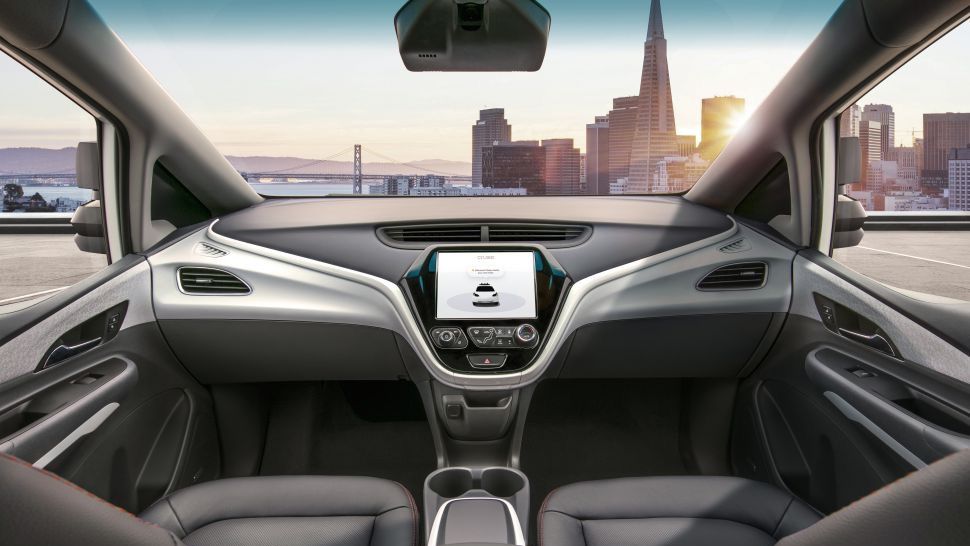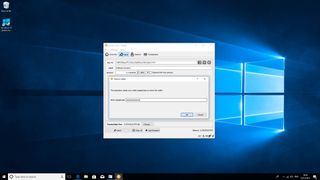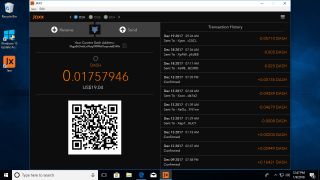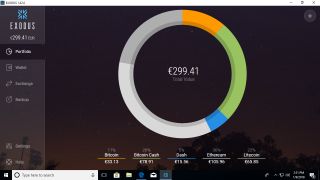After 51 years, CES in Las Vegas still manages to pack some surprises. No, I'm not talking about the rain that caused crazy floods or the two-hour blackout in Central Hall of the Las Vegas Convention Center. I'm talking about 65-inch rollable OLED displays, robotic dogs, and $4,000 treadmills that deliver live workout classes on HD screens.
There were far less phones and tablets than we saw a few years ago, but more and more companies are saving those big announcements for Mobile World Congress in Barcelona next month. Yet despite the fact that the Detroit Auto Show is just about to start, it can be argued that CES has become the greatest car tech show of the year.
Below we've gathered our favorite 21 new products and technologies from the show. Although they aren't all guaranteed to the make it to market in 2018—if ever—they represent the type of tech we hope to see in the year ahead.
Best Laptop
Acer Swift 7
Dubbed the world's thinnest notebook, the Swift 7 measures just 0.39-inch thick and weighs 2.48 pounds. With a sturdy aluminum build, it avoids feeling flimsy, a pitfall that many light systems fail at, and it looks as nice as it feels. When the Swift 7 drew audible excitement and instant comparisons to a MacBook Air from our photographer, I knew Acer had succeeded with its design. It will arrive this spring at $1,699, packing an HD touch display, an Intel Core i7 processor, and 4G LTE connectivity.
Best Convertible Hybrid Laptop
Dell XPS 15 2-in-1
The premium XPS line has been consistently lauded for its quality build and solid feature set, and Dell is now bringing that experience to a convertible 15-inch system. Convertibles this size often raise eyebrows, as the screen is arguably too large to be used comfortably in Tablet mode, but the XPS 15 is the slimmest on the market. This, along with the overall high build quality, helps mitigate the size. It's outfitted with eighth-generation Intel processors and discrete graphics, making it a viable professional's laptop for productivity in the office or on the road.
Best Windows Tablet
Lenovo Miix 630
With a starting price of $799, the Lenovo Miix 630 detachable tablet is on the less expensive end of a brand-new crop of PCs that run power-sipping Qualcomm Snapdragon processors originally designed for smartphones. It's got a 12.3-inch full HD touch screen that's fortified with Corning Gorilla Glass. There's a kickstand built into the back of the tablet to prop it up when the keyboard is attached, and the whole thing weighs just less than 3 pounds. The big draw here: Lenovo claims the Miix 630 will last up to 20 hours between battery charges. Even better, that estimate assumes you'll use it as you would a smartphone: rarely turning it off and accessing the internet both via Wi-Fi and the included LTE modem. Depending on the cost of wireless service plans and whether or not that battery claims ring true, this Windows tablet has the potential to be a road warrior's best friend when it goes on sale this spring.
Best Phone
Honor View 10
Honor's View 10 sets the bar for value. Huawei's low-cost spinoff brand is bringing a 6-inch phone with tons of RAM and storage, an AI-enhanced camera, and a flagship-level Kirin 970 processor to the US for less than $500—that undercuts the OnePlus 5T by at least $30, and it's about half the price of Huawei's own Mate 10 Pro. Honor has sold great $200 phones in the US for a few years now, and this device pushes its market up to people who aren't looking to make compromises.
Best Smartwatch
Misfit Path
Similar to the Misfit Phase but designed with smaller wrists in mind, the Misfit Path is a beautiful smartwatch that looks more like an analog timepiece. It can track steps, calories burned, distance, and sleep, as well as receive your call, text, and app notifications from your phone. Swimmers will be happy to note it's safe for the pool and shower. It launches this spring, and at $150, the Path is not only stylish but also affordable.
Best Health and Fitness Device
Peloton Tread
While a $4,000 treadmill is undoubtedly extravagant, Peloton's Tread sets itself apart with a 32-inch HD touch screen. And for $39 per month, you can stream more than 10 daily live classes, as well as guided workouts. You can view your stats at the bottom of the screen, and view a leaderboard of other Peloton users on the side. That should be enough to motivate you, if spending all that money on a treadmill doesn't do the trick.
Best Car
Fisker EMotion
Fisker's founder, Henrik Fisker, cut his teeth working on sports cars for Aston Martin and BMW, and it shows in his latest design, the Fisker EMotion. This gorgeous sports sedan could have won on looks alone with great lines and butterfly doors, but it also runs an all-electric powertrain with a battery that'll carry the car up to 400 miles. Fisker promises a radical new battery design in less than five years that will increase range to 500 miles and require only 9 minutes of charge time. So smart power coupled with a host of luxury and connected car features (including advanced LiDAR-based autonomous driving capabilities being developed through a partnership with Quanergy) make this $129,000 sports car the belle of this year's CES ball.
Best Car Accessory
Raven
New cars just keep getting smarter and more connected. And nowhere is that more obvious than at CES. But what if you're not ready to trade up your couple-of-years-old ride just yet? The $300 Raven sits on your dashboard and packs a Wi-Fi hotspot, GPS, security system, vehicle diagnostic system, and front- and cabin-facing video cameras in a box no bigger than your rearview mirror. It will even give you feedback on your driving skills.—Wendy Sheehan Donnell
Best Drone
Tello
The Tello isn't a flashy pro drone. It's a $99 quadcopter, controlled by your phone or optional Bluetooth gamepad, with a modest 720p video camera. But the price is a big plus, especially when you consider that it's powered by Intel and DJI tech. It looks like a solid choice for people who want a drone, but don't want a high-powered pro model. It's also a teaching tool; it can be programmed with MIT's Scratch language, and anything that teaches you (or your kids) to code is a plus in our book.
Best Camera/Phone Accessory
DJI Osmo Mobile 2
The Osmo Mobile 2 is our pick for the best camera gear of CES, even though it doesn't have a lens or sensor. The handheld gimbal, priced at just $129, works with Android and iOS phones. It keeps handheld video silky smooth, can be mounted on a tripod, and has an app that adds time-lapse and other capabilities to your phone's camera. It's less expensive than its predecessor, and has three times the battery life—15 hours.
Best Smart Home Device
JBL Link View Smart Display
We saw a ton of devices with integrated Amazon Alexa or Google Assistant at CES this year—cars, bathrooms, TiVos, you name it. But the most important category for Google was its four smart displays, which give Google Assistant a solid (and YouTube-enabled) competitor for the Amazon Echo Show. While we love the industrial design of Lenovo's model, JBL's—which appears to be based on its Link 300 speaker—looks like it will offer better audio, making it a flexible home entertainment and home control center.
Best Television
The Wall by Samsung
We thought the TV size race was over, since manufacturing an LCD panel of more than 85 inches is prohibitively difficult and expensive. Samsung surprised us with a 140-inch monster that doesn't use LCD or OLED. The Wall by Samsung reaches its massive size by using MicroLEDs, millions of tiny light-emitting diodes arranged in an array. LED arrays are used for huge commercial signs and usually have giant pixels that are easily visible unless you're several dozen feet away, but the Wall's pixels are just 0.8 millimeters, which promises a viewing experience that's closer to a TV than a billboard.
Best Home Theater Gear
TCL Alto
Roku announced its Roku Connect software to encourage the development of audio products that work with its media streamers and licensed Roku TVs. TCL is the first company to jump on the bandwagon with its Alto line of speakers, of which the Roku Smart Soundbar is the first and currently only model. It's simply a soundbar designed to work with TCL Roku TVs, or any other device that uses Roku OS. It enables voice control with the Roku Entertainment Assistant, wireless playback of music without using your TV, and basically brings audio-only options into the Roku ecosystem.
Best Audio Gear
Libratone Track+
Libratone is best known for its speakers, but has proven its chops at making earphones with the excellent Adapt Q Lightning. Now the company is combining noise cancellation technology and a workout-friendly design into an impressive set of wireless earphones. The $200 Libratone Track+ might not be completely wire-free like so many other new pairs, but they incorporate adjustable active noise cancellation and are resistant to splashes, all at a slightly friendlier price than the Bose QuietControl 30.
Best Networking Gear
Asus Lyra Voice
In a world with way too many gadgets—especially in the living room—we savor devices that multitask well. The Asus Lyra Voice pulls triple duty as a tri-band AC2200 mesh Wi-Fi router, a speaker, and a digital assistant. With a built-in microphone, two eight-watt speakers, and Amazon Alexa on board, you can use the Lyra Voice to answer queries, play music, control your smart home devices, and take advantage of Alexa's many third-party skills. The Voice pairs with other Lyra routers to provide whole-home 802.11ac Wi-Fi, while the discrete speakers deliver "rich and powerful sound." We'll test those claims when we review the Lyra Voice, but we applaud Asus' ability to pack this much functionality into a slick and compact package.
Best Gaming PC
Digital Storm Spark
I saw plenty of nice gaming systems at CES, but Digital Storm's Spark stood out for its small stature. It's only 12 inches tall and 4 inches wide, yet filled with enthusiast-level components as well as custom liquid-cooling piping. You can start a build at $1,299 with an Nvidia GeForce GTX 1060, but the same tiny body can handle up to a GTX 1080 and an Intel Core i7-8700K processor. It's an impressive feat of engineering, and the black aluminum body, interior window, and customizable lighting look super sleek. It was a better year for gaming desktops than laptops—I saw nice PCs from Origin, as well—but manufacturers are in a holding pattern as they wait for the next generation of Intel processors before releasing new notebooks later this year.
Best Gaming Gear
Razer Mamba HyperFlux
The Mamba is one of Razer's high-end gaming mice, and the HyperFlux kicks things up a notch. It comes with a mousepad, the Firefly, that charges the mouse through a magnetic field. This technology allows Razer to remove the battery from the mouse, making it super light, and it stays powered for a few seconds off the pad so you can lift and adjust it while playing without disconnecting. The mouse has nine programmable buttons, mechnical switches, and Chroma lighting. The mousepad itself is rimmed with customizable lighting, and you can flip it over within the base for a hard or cloth surface. It's expensive at $249, but high-end gaming purchases tend to be luxury buys to begin with, and the innovation here just might be worth it.
Best AR/VR Headset
Lenovo Mirage Solo
Lenovo's Mirage Solo pumps new life into Google's Daydream platform by freeing it from the phone. It's an entirely liberated VR headset, in fact: With no wires and six degrees of freedom, it promises VR experiences you can run, jump, and walk through without worrying about tripping over wires. It's far less kludgey to use than dropping your phone into a headset, and uses a superior processor to the upcoming Oculus Go. This is the future of mobile VR.
Best Robot
Sony Aibo
Man's best robot friend is back. The new and improved Sony Aibo is more lovable than ever. With advanced sensors, better AI, and a friendlier design, Aibo can recognize your family, stream video through its nose, nuzzle your hand, and learn its environment. It's only available in Japan at the moment and costs a hefty 198,000 yen (nearly $1,800), but at least it won't pee on your carpet.
Best Concept/Prototype
LG Rollable OLED TV
Paper-thin screens you can simply roll up have been futuristic fantasies for years. That won't likely change anytime soon, but LG Display is pushing the technology a bit closer to reality with its 65-inch rollable OLED screen. This OLED panel rolls up like a poster and can be unspooled into a very flat panel TV. At 65 inches of 4K resolution, it's the largest, most advanced rollable screen yet.
Best New Technology
Nvidia Big Format Gaming Display
The Big Format Gaming Display (BFGD) looks like a TV, but it's really a 65-inch gaming monitor. Nvidia's new screen combines a 65-inch 4K LCD with HDR with G-Sync, the Tegra X1 processor, and the Nvidia Shield Android TV interface. It means a huge picture that can keep up with your gaming PC, and offers incredibly low latency. Instead of selling it directly, Nvidia is leaving the final design touches to Acer, Asus, and HP Omen, all of which will offer their own BFGD models.
Source: PC Mag






























